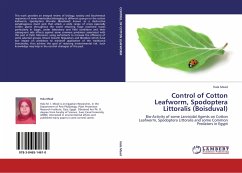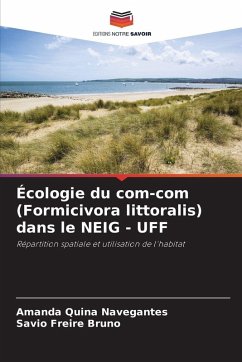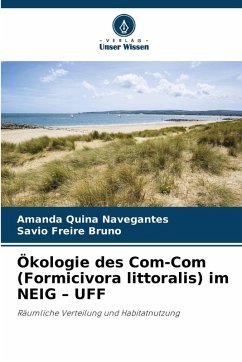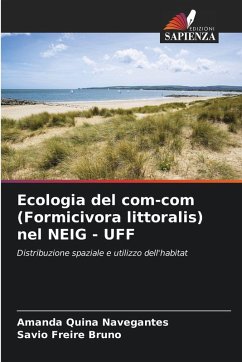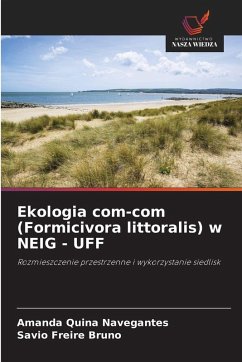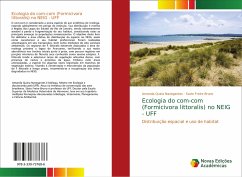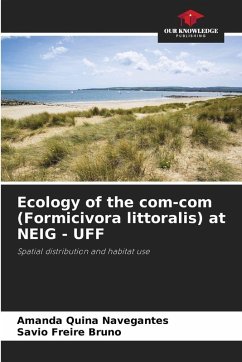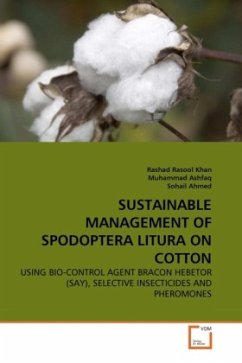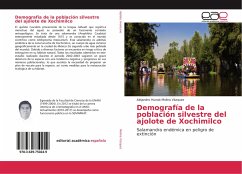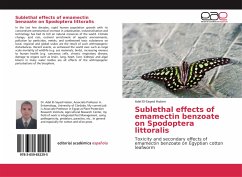
Sublethal effects of emamectin benzoate on Spodoptera littoralis
Toxicity and secondary effects of emamectin benzoate on Egyptian cotton leafworm
Versandkostenfrei!
Versandfertig in 6-10 Tagen
23,99 €
inkl. MwSt.

PAYBACK Punkte
12 °P sammeln!
In the last few decades, rapid human population growth with its concomitant astronomical increase in urbanisation, industrialisation and technology has had its toll on natural resources of the world. Climate change, acid rain, nutrient enrichment of aquatic environments, pollution by pesticides, metals, and synthesised toxic substances on local, regional and global scales are the result of such anthropogenic disturbances. Recent events, as witnessed the world over such as large scale mortality of wildlife (e.g. sea mammals, birds), increasing menace to human health (e.g. cancerous cells, chron...
In the last few decades, rapid human population growth with its concomitant astronomical increase in urbanisation, industrialisation and technology has had its toll on natural resources of the world. Climate change, acid rain, nutrient enrichment of aquatic environments, pollution by pesticides, metals, and synthesised toxic substances on local, regional and global scales are the result of such anthropogenic disturbances. Recent events, as witnessed the world over such as large scale mortality of wildlife (e.g. sea mammals, birds), increasing menace to human health (e.g. cancerous cells, chronic respiratory disease, damage to organs such as brain, lung, heart, liver, kidneys) and algal bloom in many water bodies are all effects of the anthropogenic perturbations of the biosphere.




